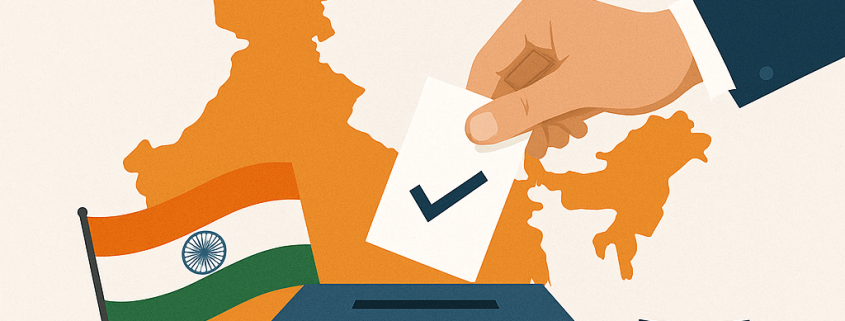One Nation One Election: Understanding the Concept, History, and Ongoing Debate
India stands as the world’s largest democracy, conducting elections at multiple levels throughout the year. From national parliament elections to state assemblies and local bodies, the country witnesses a continuous cycle of voting. However, this frequent electoral process brings significant challenges including massive costs, policy delays, and voter fatigue. This is where the concept of One Nation One Election emerges as a potential solution.
Understanding One Nation One Election
One Nation One Election means conducting elections for the Lok Sabha (Parliament) and all State Legislative Assemblies simultaneously across India, once every five years. Currently, India follows staggered elections where general elections and state elections happen at different times based on when respective government terms end.
The idea behind One Election One Nation is simple – sync all election cycles so voters cast their votes for both national and state governments on the same day. This would replace the current system where elections happen almost every year somewhere in the country.
Why Is One Nation One Election Being Proposed?
The government argues that One Nation One Election would deliver multiple benefits:
Cost Savings: Elections are expensive affairs. The 2019 general elections alone cost around ₹600 billion. Simultaneous elections would significantly reduce these repeated expenses.
Reduced Policy Delays: The Model Code of Conduct (MCC) gets imposed during every election, stopping new policy announcements. With fewer election cycles, governments can focus more on development work.
Less Voter Fatigue: Citizens won’t need to vote multiple times in a year, reducing election burnout.
Better Governance: Governments can concentrate on governing rather than constant campaigning.
Historical Background of One Nation One Election in India
Many people don’t realize that One Nation One Election isn’t a new concept. In fact, simultaneous elections were the norm in India’s early democratic years.
From 1951 to 1967, elections to the Lok Sabha and State Assemblies were held together for three consecutive general elections. This system worked smoothly until premature dissolution of some state assemblies and later the Lok Sabha caused election cycles to diverge.
By 1968-69, India moved away from the simultaneous election model. Since then, the country has followed a multi-phase, multi-year electoral schedule, leading to overlapping elections almost every year.
Current Debate and Arguments
The One Nation One Election debate has created strong opinions on both sides:
Arguments Supporting One Nation One Election
Financial Efficiency: Massive savings in election expenditure, security deployment, and administrative costs.
Improved Governance: Fewer disruptions from MCC allows continuous policy implementation.
Administrative Efficiency: Single deployment of security forces, EVMs, and election staff.
Enhanced Voter Participation: More focused campaigns could improve voter turnout.
Arguments Against One Nation One Election
Federalism Concerns: May reduce state autonomy by cutting short assembly terms to align cycles.
Logistical Challenges: Managing elections for over 960 million voters across 1 million polling stations simultaneously.
Regional Issues: National narratives might overshadow local concerns and regional parties.
Democratic Flexibility: Reduces opportunities for voters to express dissatisfaction with governments more frequently.
Legal and Constitutional Requirements
Implementing One Country One Election requires significant constitutional amendments, including changes to:
- Article 83 (Duration of Parliament)
- Article 172 (Duration of State Legislatures)
- Article 327 (Power of Parliament to regulate elections)
These amendments need a two-thirds majority in Parliament and ratification by at least half the states. Additionally, changes are required in the Representation of People Act, 1951, and Election Commission rules.
Recent Developments and Timeline
The government has outlined a roadmap for implementing One Nation One Election by 2034:
- After the 2029 general elections, state assemblies elected afterward will have shortened terms to align with the 2034 cycle
- The President will declare the start of the synchronized cycle after the 2029 election
- If any Lok Sabha or Assembly dissolves before its term ends, new elections will be held only for the remaining tenure
Several bodies have recommended this reform, including the Election Commission of India (1983), Law Commission (1999), NITI Aayog (2017), and a high-level committee led by former President Ram Nath Kovind (2023-24).
Judicial Perspective
Former Chief Justice of India, DY Chandrachud, has supported the One Nation One Election concept, stating it’s constitutionally valid and doesn’t violate the Constitution’s basic structure. However, he also cautioned against giving unchecked powers to the Election Commission, emphasizing the need for adequate checks and transparency.
Impact on Common Citizens
For average voters, One Nation One Election would mean:
- Visiting polling booths just once every five years
- Voting for both national and state leaders simultaneously
- Experiencing less political noise and more focus on development
- Simplified voting process but fewer opportunities to express dissatisfaction with governments
Conclusion
The One Nation One Election concept presents both opportunities and challenges for Indian democracy. While it promises practical benefits like reduced costs and better governance, it also raises valid concerns about democratic balance and implementation difficulties.
As India prepares for a possible shift by 2034, building political consensus, ensuring transparency, and protecting the federal structure remain crucial. The success of this electoral reform depends entirely on careful planning and cooperative federalism.
LEGAL ASSIST believes that understanding these constitutional and legal aspects is essential for citizens to make informed decisions about India’s democratic future. The debate continues, and only time will tell whether this ambitious reform will strengthen or complicate India’s electoral democracy.
For more insights on constitutional law and electoral reforms, connect with LEGAL ASSIST – your trusted partner in understanding India’s legal landscape.





